Water Scarcity Prompts Different Plans to Reckon With U.S. Energy Choke Point
Southeast could learn from Southwest.
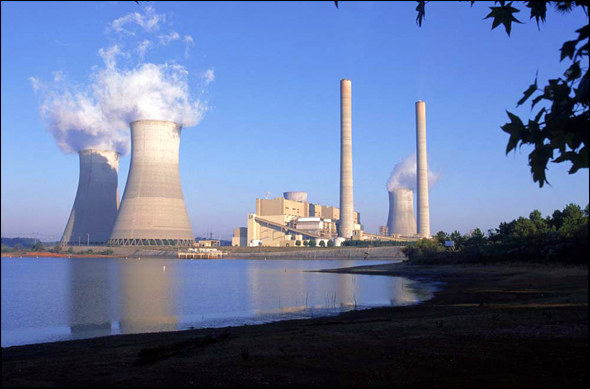
By Brett Walton
Circle of Blue
On November 14, 2007, as Georgia’s worst drought in a century drained lakes, left power plants without cooling water, and had farmers and industrialists searching for solutions, Governor Sonny Perdue sought the highest assistance at his disposal. “Thank you Lord for the rain to come,” the governor prayed. “God we need you. We need rain.”
On June 1, 2010 the Republican governor, who is nearing the end of his second term, turned to the law to help resolve the choke point his state continues to face as rising energy demand confronts diminishing freshwater resources. Perdue signed a package of conservation measures that are designed to better prepare Georgia for a new era of water scarcity by steadily decreasing how much water residents and industry use.
The Georgia Water Stewardship Act of 2010 requires metering individual apartment residences, leak detection programs for public utilities, efficient cooling systems for industrial plants, and installing low-flow water fixtures in new buildings.
But even as the new measure is applauded by leaders in many of Georgia’s economic sectors, a number of other authorities have criticized the act for omitting new water conservation measures for Georgia’s most significant water-using industrial sector: the electric power industry.
“We’re disappointed with the act,” said Sara Barczak, energy program director for Southern Alliance for Clean Energy, a regional organization devoted to developing clean energy solutions. “If you did a word search of it and read through it, you’d see energy mentioned twice, but it’s in dealing with the Department of Energy and with some code regulations dealing with toilets and showers.”
Meanwhile, more than 2,000 miles west, water managers in Arizona, New Mexico and the other desert Southwest states have taken a much different approach to water conservation and to managing water for cooling power plants. Arizona Public Service, the state’s largest electric utility, uses treated wastewater to supply nearly 60 percent of the water needed to cool its power plants, said Henry Day, the leader of the utility’s environmental department .
The Palo Verde Nuclear Plant operated by Arizona Public Service gets all of its cooling water—20 billion gallons per year—from treated wastewater, or effluent, from Phoenix and other cities nearby.
In New Mexico, Power New Mexico’s 1,800-megawatt coal-fired San Juan Generating Station, the nation’s seventh largest electric power plant, receives its cooling water under an elaborately negotiated water supply pact that anticipates water shortages. The pact was negotiated by nine stakeholders with rights to use water from the San Juan River. Power companies, irrigators, cities and the Navajo Nation reached an agreement that stipulates who cuts back in times of shortage and how they are compensated. Power New Mexico is guaranteed its share of the river through a subcontract, but it must pay the Navajo Nation for the right to use it.
“We were very concerned with coming up with a consensual arrangement between stakeholders,” said Cindy Murray, legal counsel for Power New Mexico. “Even though we all made some compromises, everyone benefits from this.”
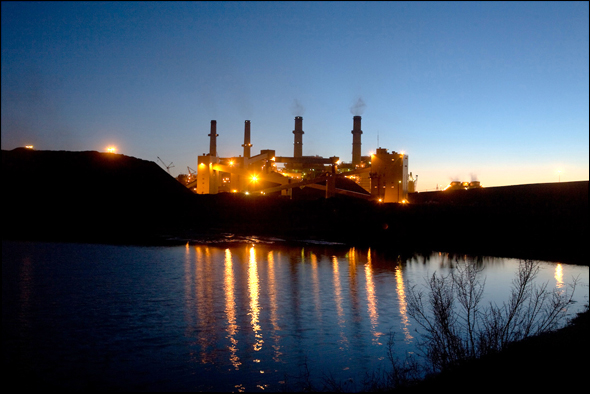
The contrast in how these two fast-growing sections of the country manage scarce water resources for electrical plant cooling illustrates new dimensions of the little-discussed choke point in the increasingly fierce competition between energy and water.
In both regions, energy demand is steadily rising, according to studies by the Department of Energy. And in both regions, declining rain and snow are steadily depleting water resources, according to the U.S. Geological Survey.
The decade-old drought on the four-state Colorado Plateau shows no sign of breaking, while Lake Powell as well as Lake Mead, the famous Colorado River reservoirs near Las Vegas, are half full. Meanwhile, another drought this summer in Georgia prompted state hydrologists to classify 92 of the state’s 159 counties as “abnormally dry.”
In the Southeast, moreover, water for cooling electric power plants is the largest industrial source of freshwater withdrawals. “This is a real problem now, not 10 years from now,” said Mike Hightower, a water and energy expert at Sandia National Laboratories. “It’s already occurring. That was my opinion several years ago, and recent data confirms that.”
–Mike Hightower,
Sandia National Laboratories
“About two years ago I got calls around the country from people at power plants talking about the lack of water available,” Hightower added in an interview with Circle of Blue. “An operator in the Southeast was looking at building five new plants. The manager had identified a municipal wastewater supply for one but was looking for sources for the other four. He couldn’t find other sources. That’s anecdotal but shows serious worries about water supplies for power plant designs.”
Georgia Briefly Considered Energy-Water Conflict
In Georgia, state officials insist that it was not an oversight to neglect water conservation measures for electric utilities. Perdue’s office argues that the Federal Energy Regulatory Commission, the federal agency that oversees power plants, has jurisdiction.
“The question came up, if power plants should be included,” Bert Brantley, Perdue’s communications director, told Circle of Blue. “The answer was that the FERC process will drive how these plants are designed and built. Federal regulations would be over and above what the state would do anyway.”
However, the assertion that the federal government would fill the regulatory gap is incorrect. FERC does not have a say in a power plant’s design or how much water it takes out of a river, according to an agency spokesperson. Those are state responsibilities.
The absence of clear policy and direction in understanding the water-energy connection is not restricted to Georgia. Across the Southeast, as massive freshwater withdrawals by thermoelectric plants grow, they remain unevenly regulated. In six southern states—Alabama, Georgia, North Carolina, South Carolina, Tennessee and Virginia—75 percent of freshwater withdrawals in 2005 were used to cool power plants, according to U.S. Geological Survey.
That’s far higher than the national rate. Half of all water withdrawals in the United States are made by the utility sector. In addition, while total freshwater withdrawals for the rest of the country did not change between 1990 and 2005, withdrawals in the Southeast increased by 22 percent.
To compound the problem, growing demand and climate change are reducing the available supply. The 2007 drought illustrated the region’s vulnerability. Water levels in rivers were so low that a power plant in Tennessee had to shut down temporarily. The Browns Ferry Nuclear Plant in Alabama had to stop operations for a day because low river levels made it dangerous to discharge the plant’s hot cooling water. Georgia’s drought task force issued a press release urging citizens to save water by conserving electricity.
While this created public awareness of the issue, visibility has not translated into changes in government regulation, said Barczak.
“We are operating with little awareness at the regulatory or political level of the connection between water and energy,” she told Circle of Blue.
Law Is Source of Problem
Another source of the Southeast’s slow reckoning with the water-energy choke point is the riparian water law used east of the Mississippi, which encourages out-of-control water use, said Gil Rogers, a senior attorney at the Southern Environmental Law Center.
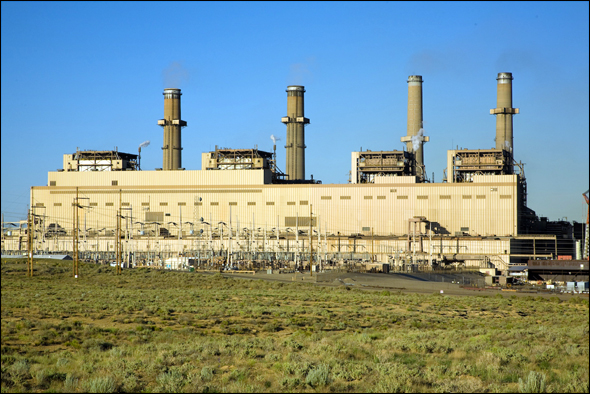
“The riparian system is a good system at its foundation. It recognizes that water in the East is a public resource,” Rogers told Circle of Blue. “No single person owns the water. It allows for the government to be able to do some regulation of water withdrawal and consumption. The problem in the Southeast is most governments are not doing that at all or doing it in such a loose way that there’s no control over water consumption, especially for large users. Part of the reason is that historically the Southeast has been water rich. Recently drought and population growth have changed that.”
The regulatory vacuum is evident across the region. While Georgia has a permitting process for surface water withdrawals, Alabama and North Carolina do not. In June, South Carolina’s governor signed into law a bill requiring, for the first time, permits for water withdrawals of more than three million gallons per month. A similar bill was introduced without success during the last four legislative sessions, said state Senator Paul G. Campbell Jr., the Republican who sponsored the initiative. Campbell said although none of the stakeholders relished the bill, they realized it was better than no bill.
“We’re cognizant of the issues between Georgia, Florida and Alabama,” Campbell told Circle of Blue. “We want to be sure we have a system in place that controls our water usage and protects the state’s rivers for wildlife.”
How the West’s Water is Managed
Southeastern states might want to look to the West for new management models. That region’s water rights-based, prior appropriation doctrine allocates water more efficiently in times of crisis. Consumers can buy and sell water to themselves if they need more water than their legal entitlement, and some states have stepped in to facilitate the process. California set up a drought bank that matches buyers and sellers, though problems with pricing and environmental regulation have hampered sales.
In contrast, the quantity available for use in a riparian system is often a matter of interpretation requiring judicial intervention, said Brian Gist, a senior attorney at the Southern Environmental Law Center.
–Brian Gist,
Southern Environmental Law Center
“The rule in Georgia is amorphous: Is your proposed use of water reasonable?” Gist said to Circle of Blue. “One of the big differences with water in the U.S. is the fundamentally different way states view it. Under riparian law you are entitled reasonable use. There’s not a whole lot of guidance beyond that. Is 15 million gallons per day reasonable? Is five million? These are questions rather than strict legal requirements. The only guidance is what a judge would say.”
Even in a drought, Western power plants can buy water from farmers or cities to keep their operations running. These kinds of negotiations helped avert water shortage problems for electrical plants in northwest New Mexico.
During the record-breaking 2002 to 2003 drought, reservoirs in New Mexico were on the verge of drying up. Precipitation in the San Juan river basin, a tributary of the Colorado, dropped to its lowest level since record-keeping started in the 1930s.
Since water rights on the San Juan had not been legally defined, the river’s users didn’t know what to do.
“Everyone was concerned,” said Cindy Murray, counsel for Power New Mexico. “At that time, the Navajo Nation claimed historical priority to all the water in the San Juan river.”
Based on historical use, PNM and the cities served by the river basin had junior water rights and risked being cut off from their supply if the state engineer made a priority call, Murray told Circle of Blue.
Water users in the basin dodged a crisis because of two cooperative acts: farmers voluntarily reduced their usage, while a shortage sharing agreement among nine stakeholders was negotiated, said Randy Kirkpatrick, executive director of the San Juan River Commission.
The agreement was timely. Even though the Navajo Reservoir reached historic lows in December 2003, roughly 90 feet below its capacity level, operations at the San Juan Generating Station never had to be curtailed.
Costly Alternatives
Drought forced utilities in the Southwest to use new cooling technologies and water sources in their power plants. Most older power plants were built using once-through cooling, a process in which water is taken out of the nearby river or lake, used for cooling and then returned to the water body at a higher temperature. This requires a plant to withdraw a lot of water, but it will consume very little. The National Energy Technology Laboratory (NETL) estimates that 43 percent of the current U.S. thermoelectric generating capacity uses a once-through system, mostly in states east of the Mississippi.
–Shahid Chaudhry,
California Energy Commission
All the experts interviewed for this article agreed that once-through cooling systems are no longer viable because they require such a large amount of water.
“There will be no more once-through cooling,” said Shahid Chaudhry, the program manager for water and energy efficiency at the California Energy Commission. “It’s hard to finance and get approval.”
The other option for a power plant is a recirculating system, which comes in two variations: wet and dry. Recirculating systems reduce the amount of water a plant withdraws but increase both consumptive water use and cost. Wet cooling recycles the water it uses and increases construction costs by 40 percent over a once-through system.
Dry cooling uses ambient air like a car radiator to cool the plant and is often three to four times more expensive to build than wet cooling, according to NETL figures. Maintenance costs also increase for dry systems.
Higher cost is only one of the limiting factors for dry cooling—reliability is another.
“There is a reliability issue because there has to be back up generation,” Hightower said. “In July and August when it is really hot, dry cooling doesn’t work well. Unfortunately that coincides with peak demand.”
On really hot days, dry cooling systems are limited because they cannot cool the plant to the proper level since the outside air is too warm, Chaudhry explained to Circle of Blue. Because of these constraints, dry cooling comprises less than one percent of U.S. generating capacity, according to NETL. A more reliable hybrid system that incorporates both technologies is possible for water-short regions where dry cooling makes economic sense.
“All [alternative] approaches have strengths and limitations, which depend on where you are siting the plant,” said Robert Goldstein of the Electric Power Research Institute, an independent non-profit that observes the energy sector. “The best strategy is to develop a toolbox and evaluate them with respect to given site. In hot weather the efficiency of dry cooling declines. With non-traditional water sources, if you are near a sewage treatment plant, that might look attractive.”
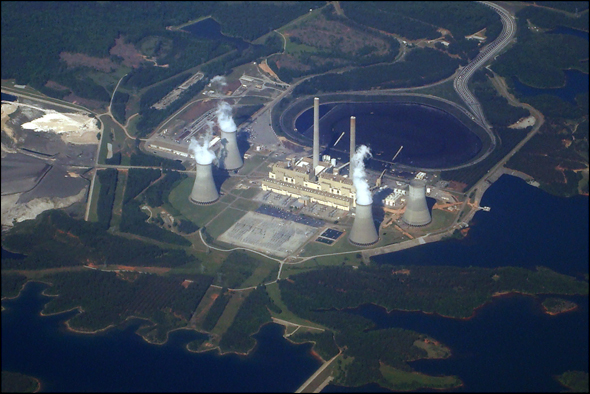
Indeed wastewater is an increasingly popular option in the Southwest with its own set of limitations prompted by increasing demand. “Everyone is trying to conserve water, especially in the Southwest,” Chaudhry said. “The supply of urban wastewater might actually be decreasing in some places. This is a tangled issue—local, state and regional. All the resources are integrated.”
“As we move forward, one thing we know is that we live in a desert and we live in an area with expected high growth,” said Henry Day of Arizona Public Service. “Supply and demand will likely force prices up. We need to look pretty hard at water.”
Brett Walton is Seattle-based reporter for Circle of Blue. Contact Brett Walton

Brett writes about agriculture, energy, infrastructure, and the politics and economics of water in the United States. He also writes the Federal Water Tap, Circle of Blue’s weekly digest of U.S. government water news. He is the winner of two Society of Environmental Journalists reporting awards, one of the top honors in American environmental journalism: first place for explanatory reporting for a series on septic system pollution in the United States(2016) and third place for beat reporting in a small market (2014). He received the Sierra Club’s Distinguished Service Award in 2018. Brett lives in Seattle, where he hikes the mountains and bakes pies. Contact Brett Walton

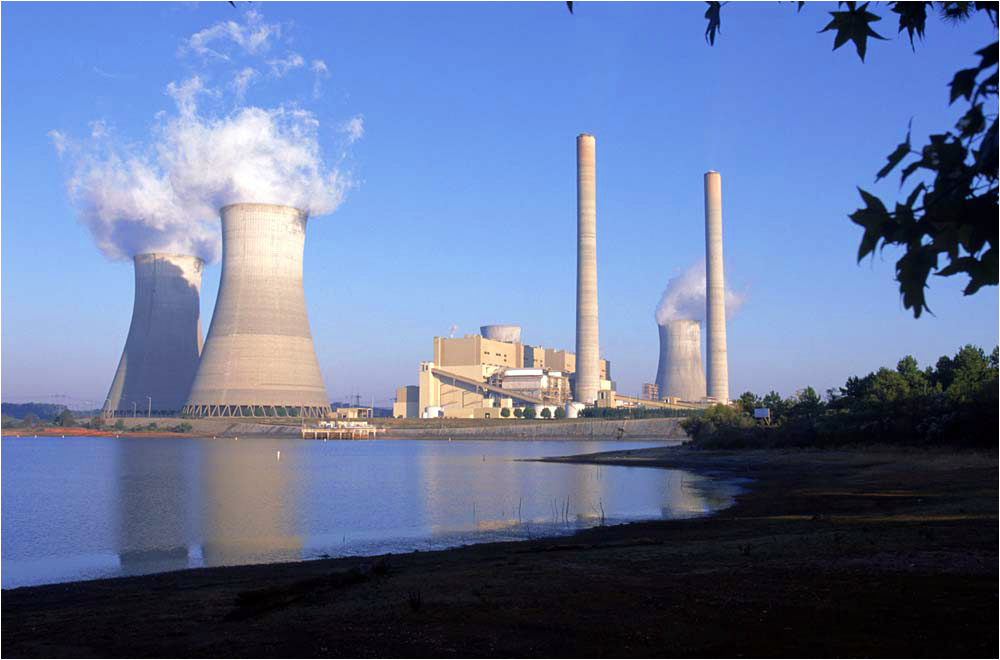

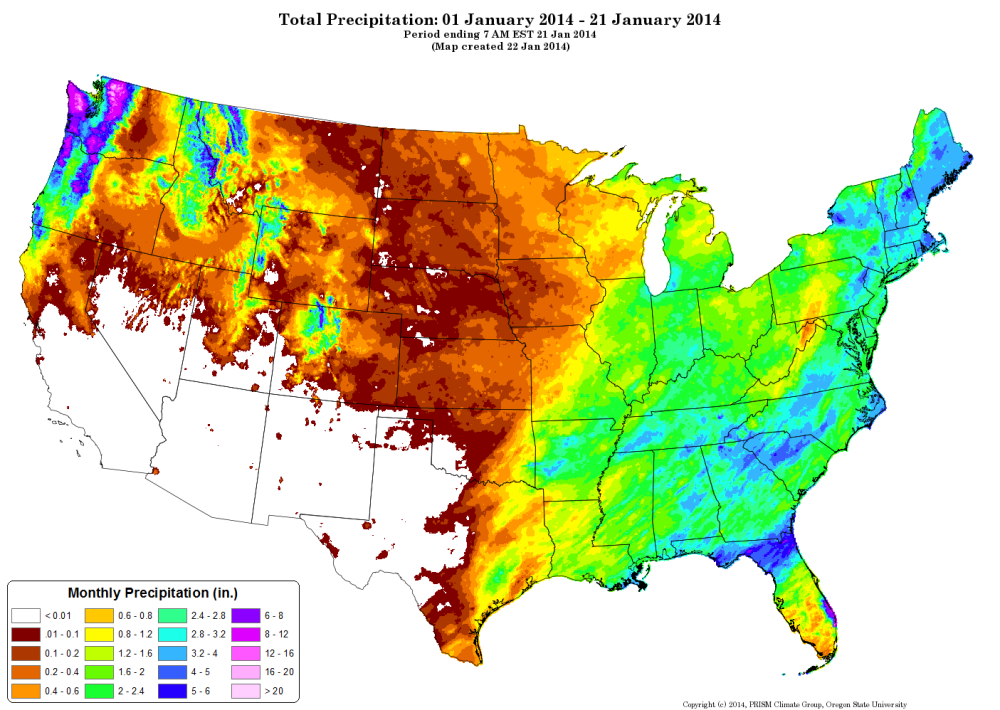

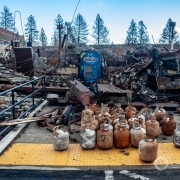



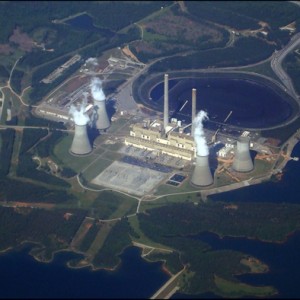
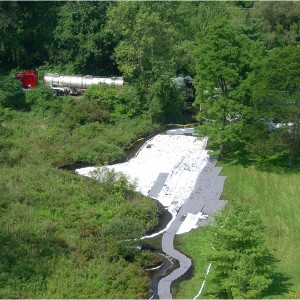
Comments are closed.